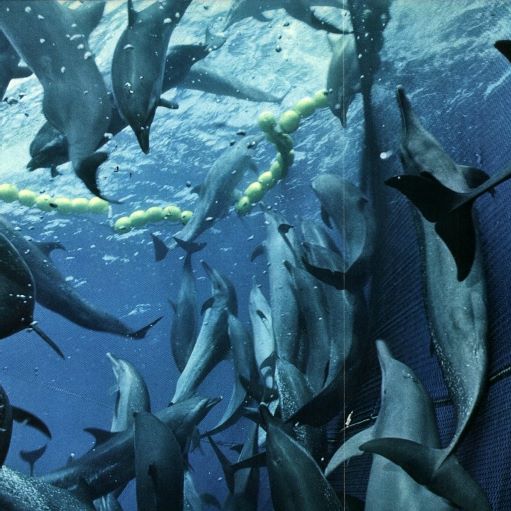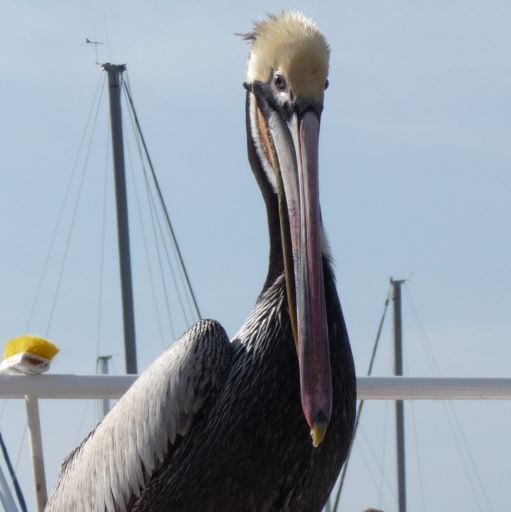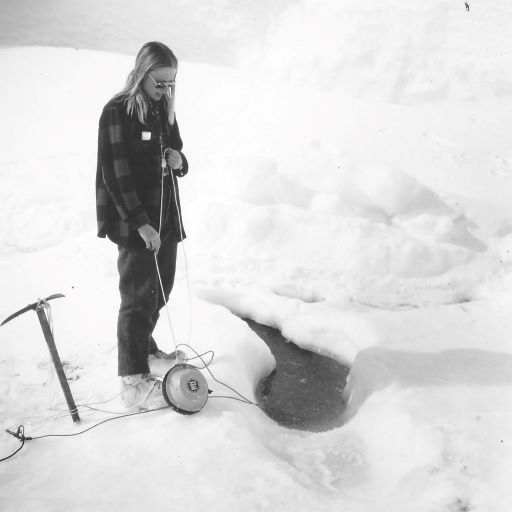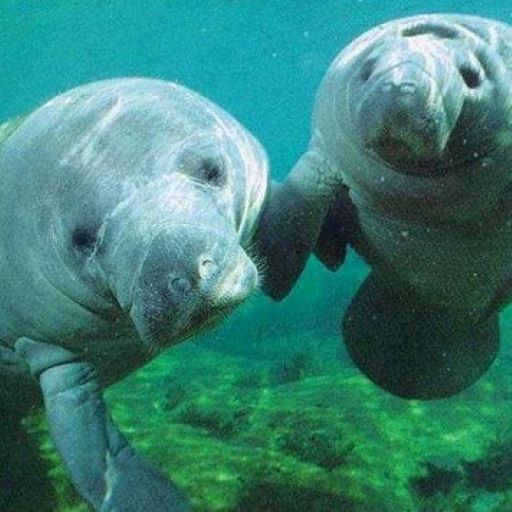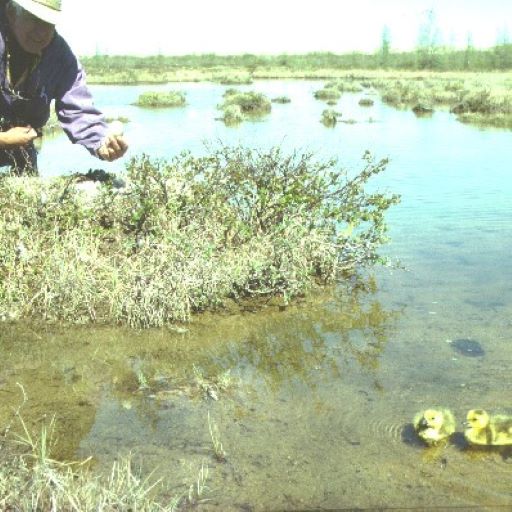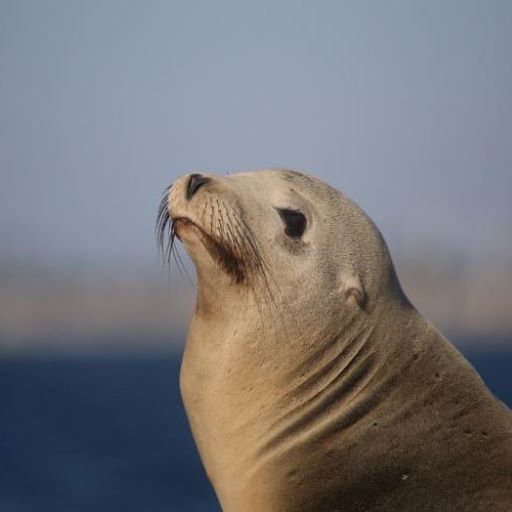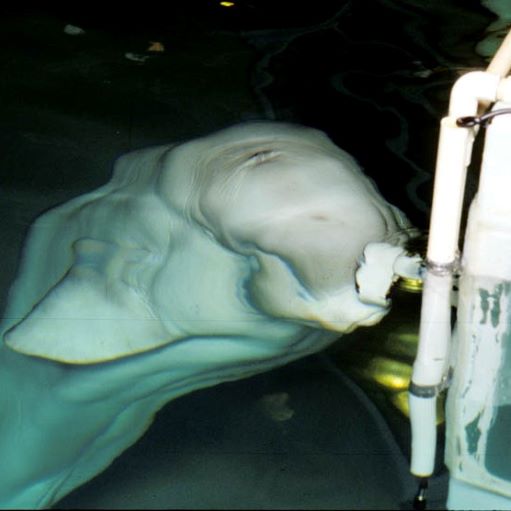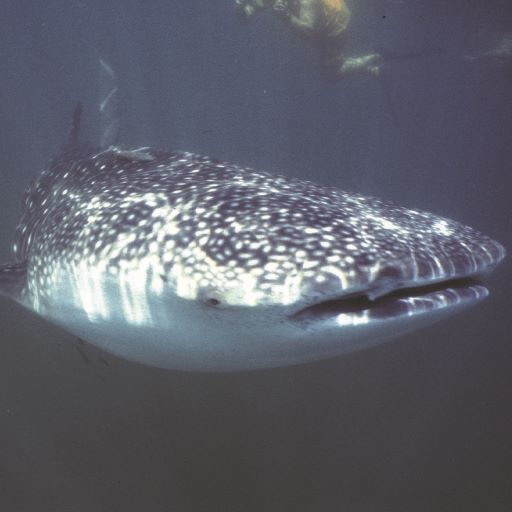In the first research project ever conducted by the Institute, we worked with the California Department of Fish & Game to tag albacore and bluefin tuna along the California coast. This 10-year research was the first time these fish had been tagged for tracking in the world. The information from this research informed future discussions on dolphin entanglement in tuna fishing nets.
Through tagging and tracking in the eastern tropical Pacific Ocean, we discovered migration patterns of dolphins. This migratory data was later used to inform dolphin-free tuna standards created in the late 1980s and early 1990s.
Read more
In the 1960s and 1970s, we discovered that DDT exposure resulted in the thinning of California brown pelican eggs, a major factor in the near extinction of this iconic bird.
Read more
HSWRI researchers first recorded bowhead whales’ vocalizations during whale surveys in Alaska. Whale songs like these were an inspiration for the Save the Whales campaigns of the 1970s, which eventually banned commercial whaling.
Read more
A survey conducted in eastern Florida’s Indian River Lagoon system showed 90% fewer manatees and dolphins than previously claimed. These counts provide a baseline for future surveys as we continue to track the impact of environmental degradation in the Indian River Lagoon.
Read more
Elephant seals are considered sentinel species, meaning they can detect risks to humans and provide warning of danger. By tracking the population of elephant seals in the California Channel Islands through population surveys from 1958 to 1978, we can measure how climate may impact them and us.
Read more
HSWRI researchers at the McMurdo Station recorded Antarctic killer whale calls for the first time. Killer whale vocalization is still studied today and has been a topic of several HSWRI’s research initiatives – just check out 1984!
Read more
For years, the water diversion from Mono Lake, California, to the Owens River had researchers worried about the effects on wild populations. Through a 20-year study, HSWRI tracked the impact of the shrinking lake on migratory bird populations.
Read more
HSWRI releases a report on the potential impacts of Space Shuttle noise on birds, seals and sea lions on California’s Channel Islands, providing the U.S. space program with critical environmental information for its California operations.
Read more
Following the strongest El Niño event of the century, we tracked California sea lions’ severe decline and slow recovery.
Read more
The answer: kind of! After analyzing killer whale calls from Iceland and Norway, we determined that there are distinctive dialects for these different pods of orcas.
Read more
To measure the impact of oil drilling on beluga whales in the wild, we first observed the animals in SeaWorld, and then compared this response to that of wild belugas off the coast of Alaska.
Read more
Following the Exxon Valdez oil spill in Prince William Sound, Alaska, HSWRI’s researchers were called on to focus on saving sea otters. Luckily, we had already discovered that the best way to clean sea otters can be found in most people’s kitchens!
Read more
Using new tracking technology, we discovered that elephant seals returned to the same foraging areas during post-breeding and post-molt movements, documenting the first double migration for any animal. Elephant seals traveled a whopping 21,000 km (13,000 miles) – the longest migration recorded at the time.
Read more
For the first time, we used satellite-linked radio telemetry to document the geographic and vertical movements of whale sharks, tracking their migration from the Gulf of California to the north Pacific Ocean.
Read more
The opening of our white seabass hatchery in Carlsbad, CA, greatly expanded our replenishment program. Since our first tagged and released white seabass in 1986, we have tagged and released over 2,700,000 juvenile white seabass as part of our ocean replenishment project.
Read more
Researchers at HSWRI assisted SeaWorld San Diego in the study and successful release of a California gray whale calf named “JJ,” who captivated the public.
Read more
As Team Leader of the Pacific Sea Turtle Recovery Team, we collaborated with professional biologists to draft recovery plans for all six species of endangered Pacific sea turtles to address the decline of these ancient species.
Read more
HSWRI joined a group of 800 researchers to study how changes in the environment cause fluctuations in the abundance, growth patterns, life histories, and behavior of Antarctic animals. We focused on the four species of Antarctic pack ice seals (crabeater, leopard, Weddell, and Ross seals), which are at least half of the world’s seals, and made the first health assessments of all four species at the same time in the same location.
Read more



